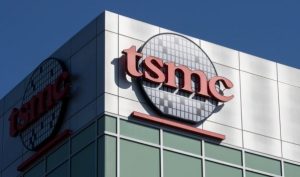Chip industry sees labor shortages threatening US expansion plan

The semiconductor industry warned that there won’t be enough engineers, computer scientists and technicians in the U.S. to support a rapid expansion this decade, threatening efforts to boost the domestic chip economy.
Chipmakers are on course to add about 115,000 jobs by 2030, the Semiconductor Industry Association said, citing a survey it commissioned. Based on a study of current degree-completion rates, though, about 58% of those projected positions could remain unfilled.
Chip companies have long cited a struggle to find qualified U.S. employees. Just last week, Taiwan Semiconductor Manufacturing Co. said production at a planned facility in Arizona will be postponed from late 2024 until 2025 because of a shortage of skilled workers. The move dealt a blow to efforts by the Biden administration, which is counting on federal incentives to revitalize semiconductor manufacturing in the U.S.
“We’re supposed to go from a $550 billion industry to a trillion-dollar industry in 2030, and that’s going to take more talent,” said John Neuffer, chief executive officer of the SIA. “If we aren’t able to get our arms around this, our industry in general will falter.”
TSMC is one of a number of large chip companies — a group that includes Intel Corp. and Samsung Electronics Co. — that have announced plans to build production facilities in the U.S. They’re trying to take advantage of billions of dollars set aside by last year’s Chips and Science Act to bolster the domestic industry.
Total industry revenue will grow to $1 trillion by 2030, almost double where it was in 2020, the SIA said. At that point, the field will need about 460,000 workers, according to the study carried out by Oxford Economics. Based on current trends, companies won’t be able to fill 67,000 new positions.
Not enough Americans are studying science, engineering, math and technology-related subjects, according to the SIA. And people from other countries who are acquiring those skills are leaving, the group said.
At U.S. colleges and universities, more than 50% of master’s engineering graduates and 60% of those with a doctorate in engineering are citizens of other countries. About 80% of those master’s graduates and 25% of those who earn doctorates depart the U.S. — either by choice or because immigration policy doesn’t allow them to stay.
The SIA CEO said that in the near term, the fix has to come from immigration reform that would allow the U.S. to retain more of the talent that it’s creating at its world-leading universities. Beyond that, the U.S. has to lure more students into the relevant education path, and the chip industry has to do a better job of attracting those who have the skills it needs.
Neuffer said he’s optimistic that lawmakers in Washington are ready to help address the skills shortage. The supply-chain struggles during the pandemic may have actually helped matters because they raised the chip industry’s profile, he said.
“No one is going to forget the chip shortages that we had and that chips are critically important,” Neuffer said. “One silver lining from the pandemic is there’s a whole lot of people who give a damn about chips.”
Source:Chip industry sees labor shortages threatening US expansion plan (richmond.com)

